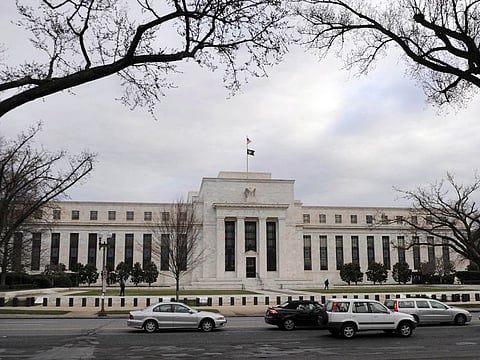Recessionary risks loom large for US economy
US economy has been sheltered from a global slowdown, but it may not last for long

Last Friday’s US jobs report was mixed at best, with its unemployment rate dropping a notch to near 50-year lows of 3.5 per cent but where wage growth was absent, and with manufacturing, retail and utilities all under pressure. A slowdown in manufacturing came as no surprise, especially in light of manufacturing surveys earlier in the week out of the Institute for Supply Management (ISM) that showed another contraction, but this time at its worst pace in over a decade, and followed by services data that while still barely expanding, sowed fears that the manufacturing recession might spread to engulf other sectors.
Retail bankruptcies, consumer confidence dropping, and data readings below estimates compounded the problem, with many wondering out loud whether the global slowdown was spreading to include the US, even if its Federal Reserve’s (Fed) Chairman Powell said late last week that the economy “was in a good place”.
The story however, begins elsewhere, with global demand plummeting on liquidity issues that have been exacerbated by a worldwide US dollar (USD) shortage. And the trade war that slapped tariffs on the manufacturing sector made sure it was the first casualty of weakening demand, putting the sector globally in a recession, and hurting export-oriented economies in East Asia and manufacturing powerhouses like Germany, the latter’s economy on the brink of a recession.
In the US, its central bank had to tread carefully between a US economy that was outperforming on the back of tax cuts in need of relatively higher rates to dampen expected inflationary pressures, and the global economy reliant on greenback easing.

In the US, its central bank had to tread carefully between a US economy that was outperforming on the back of tax cuts in need of relatively higher rates to dampen expected inflationary pressures, and the global economy reliant on greenback easing given that some of its parts were suffering contraction and needed to service their dollar-denominated debt with a cheaper and not more expensive dollar.
The Fed has thus far opted to cut rates twice and consecutively, as well as intervening in the short-term borrowing repo market following a spike in its rate on a liquidity crunch that has now reached US shores given larger budget deficits in the US that’ll dump more securities on the market and demand more dollars in order to service. And while that short-term liquidity shortage is quickly being addressed by the central bank without the mention of quantitative easing, should those pressures persist, and it’ll only be a matter of time where addressing it part-time will turn into a full-time gig.
With countries, companies, and households globally in need of dollars to service their ongoing USD-denominated debt commitments, further monetary easing has been the common answer from foreign central banks around the world, slashing interest rates and/or reinitiating bond purchasing programs to push more liquidity into the system, and in the process weakening their currencies against the dollar and hurting US manufacturers who can’t compete against foreign low-cost producers selling their goods in a cheaper currency while American factories attempt to sell their goods in an expensive – and much needed – dollar.
So until the issue is addressed, the disconnect will for now remain in place between a US economy buoyed by both rising fiscal policy and a relatively accommodative central bank that can issue dollars, against a global economy suffering from weakening demand. But it also means that growth isn’t going to emanate from outside the US, and as time progresses and the trade war expands to engulf Europe where the US exports three times as much to the continent than China, that disconnect looks set to decrease, and likely drag the US economy into a recession.
The writer is a market analyst for IG, a world-leading online trading provider
Sign up for the Daily Briefing
Get the latest news and updates straight to your inbox


![Latest discovery follows several 1,000-tonne-plus gold finds in the past year. [Illustrative image]](http://media.assettype.com/gulfnews%2F2024-11-27%2F9rs31cwr%2FStock_Gold_Mining_18c61d0bfc2_original_ratio.jpg?w=320&auto=format%2Ccompress&fit=max)